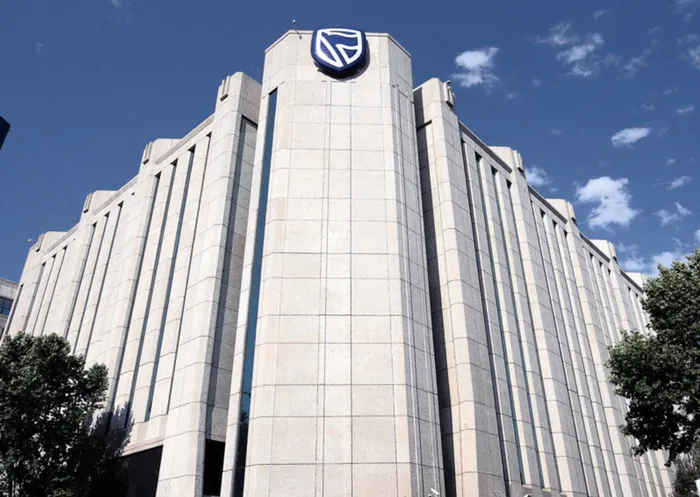Standard Bank loses share of market

Standard Bank head office in downtown Johannesburg. Photo: Leon Nicholas, Independent Media. Standard Bank head office in downtown Johannesburg. Photo: Leon Nicholas, Independent Media.
Standard Bank’s earnings declined slightly in the first four months of this year, the bank reported yesterday, giving an indication that it was constantly losing market share to other industry players, in particular to the smaller banks.
Industry experts said the bank was losing customers to rivals after the release of its four-month trading update.
The country’s largest lender by assets said demand for credit remained weak in the first quarter compared with a year earlier. Analysts said even though this was the case, Standard Bank was taking the knock harder than its major competitors.
Jean Pierre Verster at 36ONE Asset Management said the smaller banks were taking market share away from the big banks due to their positioning as banks servicing low income earners. However, Standard Bank was the only one to lose significant market share.
“I wouldn’t be surprised if Absa increased its earnings in the quarter because unlike Standard Bank, Absa is holding onto its market,” he explained.
According to the Reserve Bank’s latest BA900 report, in the first three months of 2011 Standard Bank lost market share with advances down 0.7 percent. Absa’s advances were flat while Nedbank’s were up 0.3 percent. FirstRand was ahead of the pack with advances climbing 0.7 percent. Verster cited FirstRand’s new fuel product as a possible draw card for new customers.
Standard Bank’s shares have declined 7.8 percent this year, the worst performer in the six-member FTSE/JSE Africa Banks index, which has declined 2.5 percent.
“Standard Bank’s share price has underperformed… due to its proportionately larger exposure to international operations, which have lower profitability than its local operations,” Verster said.
But Afrifocus analyst Johann Scholtz said Standard Bank’s performance was in line with expectations, taking into account that the bank was undergoing restructuring.
“Its exposure to the developed world was reduced. With the restructuring cost in base they could have done worse. When they are through with it, they are bound to bounce back,” he said.
Last year Standard Bank revised its strategy to focus on Africa and as a result, its London business was downscaled. Scholtz said Standard Bank might have less revenue after this process, but its earnings would improve.
“People have been disappointed that Standard Bank has been the worst performer for most of this year, they are disappointed by its profit but this is a short-term effect,” Scholtz said.
Imara SP Reid analyst Stephen Meintjes said Standard Bank was merely a victim of reduced credit appetite among high income earners and slower economic recovery.
“Credit extension remained tough and Standard Bank may have not expected that income from Africa would take longer.” He said the big four banks were negatively affected by the declining growth in lending and the need to have sufficient capital to meet regulatory requirements.
Moreover, the negative endowment effect of declining interest rates had a significant impact and since it was probable that rates would remain low, it was uncertain when the endowment effect would turn positive.
Verster said it would take longer than previously anticipated for the sector’s profitability to get back to 2007 levels.
Scholtz said with improvements in bad debt, he expected positive earnings for all major banks in their full-year results, including Standard Bank.
Standard Bank already said its results were showing an improvement from the second half of 2010. Credit impairments decreased in its personal and business banking units.
The group’s cost-to-income ratio was higher than over the first four months of 2010, given the pressure on revenue, but showed a declining trend from the 61.7 percent recorded at the end of 2010. The group said it remained focused on its objective to keep total costs flat in 2011 compared to 2010.
Standard Bank’s total capital adequacy ratio was 15.1 percent and tier 1 capital adequacy was 12.7 percent.
The stock gained 1.31 percent to R100.50 yesterday. - Londiwe Buthelezi